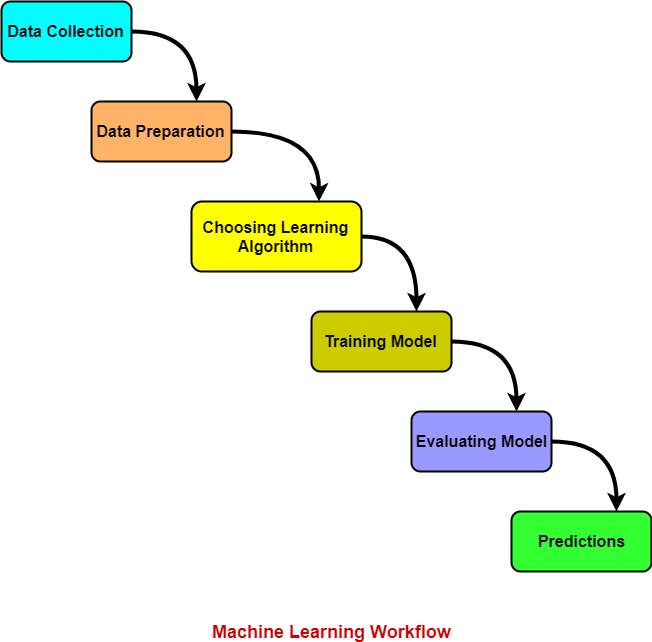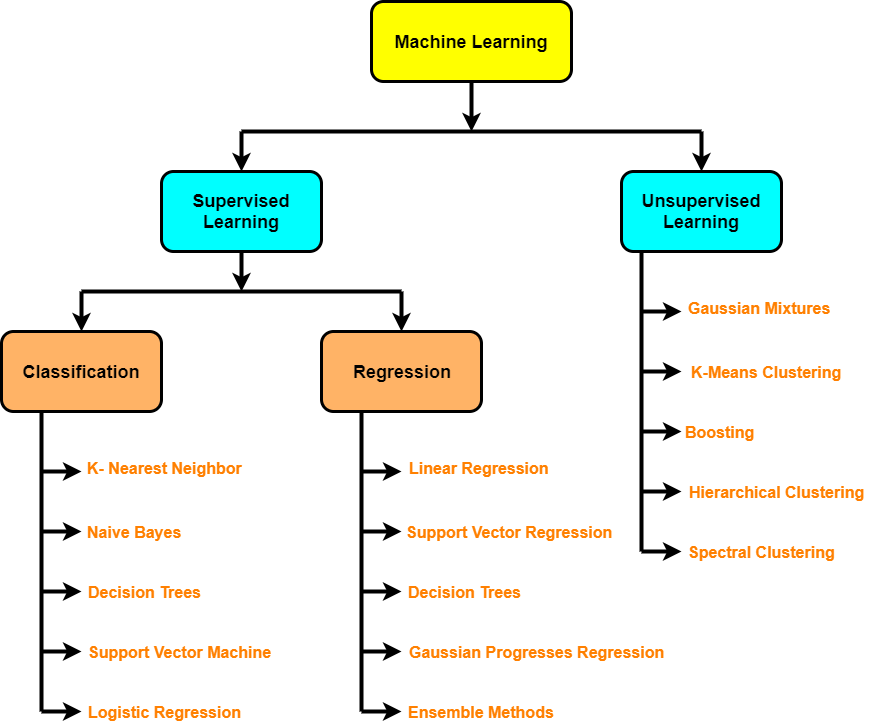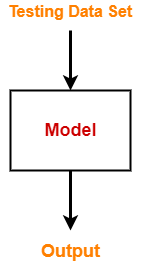Machine Learning-
Before you go through this article, make sure that you have gone through the previous article on Machine Learning.
We have discussed-
- Machine learning is building machines that can adapt and learn from experience.
- Machine learning systems are not explicitly programmed.
In this article, we will discuss machine learning workflow.
Machine Learning Workflow-
Machine learning workflow refers to the series of stages or steps involved in the process of building a successful machine learning system.
The various stages involved in the machine learning workflow are-

- Data Collection
- Data Preparation
- Choosing Learning Algorithm
- Training Model
- Evaluating Model
- Predictions
Let us discuss each stage one by one.
1. Data Collection-
In this stage,
- Data is collected from different sources.
- The type of data collected depends upon the type of desired project.
- Data may be collected from various sources such as files, databases etc.
- The quality and quantity of gathered data directly affects the accuracy of the desired system.
2. Data Preparation-
In this stage,
- Data preparation is done to clean the raw data.
- Data collected from the real world is transformed to a clean dataset.
- Raw data may contain missing values, inconsistent values, duplicate instances etc.
- So, raw data cannot be directly used for building a model.
Different methods of cleaning the dataset are-
- Ignoring the missing values
- Removing instances having missing values from the dataset.
- Estimating the missing values of instances using mean, median or mode.
- Removing duplicate instances from the dataset.
- Normalizing the data in the dataset.
This is the most time consuming stage in machine learning workflow.
3. Choosing Learning Algorithm-
In this stage,
- The best performing learning algorithm is researched.
- It depends upon the type of problem that needs to solved and the type of data we have.
- If the problem is to classify and the data is labeled, classification algorithms are used.
- If the problem is to perform a regression task and the data is labeled, regression algorithms are used.
- If the problem is to create clusters and the data is unlabeled, clustering algorithms are used.
The following chart provides the overview of learning algorithms-

4. Training Model-
In this stage,
- The model is trained to improve its ability.
- The dataset is divided into training dataset and testing dataset.
- The training and testing split is order of 80/20 or 70/30.
- It also depends upon the size of the dataset.
- Training dataset is used for training purpose.
- Testing dataset is used for the testing purpose.
- Training dataset is fed to the learning algorithm.
- The learning algorithm finds a mapping between the input and the output and generates the model.

5. Evaluating Model-
In this stage,
- The model is evaluated to test if the model is any good.
- The model is evaluated using the kept-aside testing dataset.
- It allows to test the model against data that has never been used before for training.
- Metrics such as accuracy, precision, recall etc are used to test the performance.
- If the model does not perform well, the model is re-built using different hyper parameters.
- The accuracy may be further improved by tuning the hyper parameters.

6. Predictions-
In this stage,
- The built system is finally used to do something useful in the real world.
- Here, the true value of machine learning is realized.
To gain better understanding about Machine Learning Workflow,
Next Article- Linear Regression
Get more notes and other study material of Machine Learning.
Watch video lectures by visiting our YouTube channel LearnVidFun.